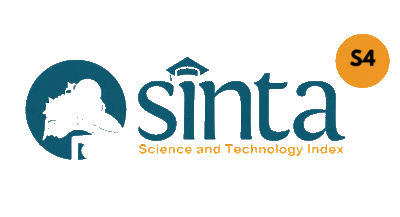Desa Grogol dengan Potensi Perkembangannya
DOI:
https://doi.org/10.24002/jai.v1i1.3914Keywords:
Grogol, Nature Learning, Tourism, Agriculture.Abstract
KKN 78 UAJY or KKN Society 5.0. using online method, so there is no direct contact with people who live in the village. Group 40 located in Grogol Village, Paliyan, Special Region of Yogyakarta. This village has a potential in tourism sector. This program aim to help Grogol Village for their development, support, and manage their potential resource. This KKN program using literature review method based on trusted source from internet, personal experience, and interview with the expert. The result of this method give us the information and idea that can relate with the situation of Grogol Village. The result is develop the tourism sector by build the tourist object such as Nature learning program using the human resource in Grogol because most of them are farmers, the second is build the outbond area using the forest or not used land, the third is build the rafting zone or develop the water travel, and the fourth is build the Culture Center because Yogyakarta is the city with strong Java Culture and Grogol is located in Gunungkidul that has a lot of tourist attraction, and the fifth is team up with the tour agency in purpose to introduce the Grogol Village to people inside or outside of Yogyakarta so they are interested to come to Grogol Village. Beside tourism, Grogol village can develop the shallot cultivation because shallot doesn’t need too much water and the climate and land condition is potential for shallot cultivation.References
B. P. S. Gunungkidul, “Kecamatan Paliyan Dalam Angka 2019.”
Enac, “Инновационные подходы к обеспечению качества в здравоохраненииNo Title,” Вестник Росздравнадзора, 2017.
F. Noor, Kiat sukses budidaya bawang merah. Yogyakarta: Biogenesis, 2017.
“No Titleخلاصه مقالات رسانه تلویزیون و سکولاریسم,” 1387.
N. D. Ana, S. I. Ikawati, N. P. Adi, Sarmoko, dan S. Endang, “No Title,” 2010. [Daring]. Tersedia pada: https://ccrc.farmasi.ugm.ac.id/?page_id=2170.
J. P. Indonesia, D. Dinartill, A. Purwito, dan A. D. Susila, “Pembentukan Umbi Lapis Mikro Dua Kultivar Bawang Merah (Allium Cepa Var. Aggregatum Group) Pada Beberapa Konsentrasi Succunic Acid Daminozide Hydrazide,” J. Ilmu Pertan. Indones., vol. 13, no. 1, hal. 32–37, 2008.
M. N. Lestari, “Rawan Pangan: Grogol bakal setop pengiriman tebu ke Madukismo, Mengapa?,” 2016. .
K. Grogol, “PANEN RAYA PADI DI DESA GROGOL,” 2018. .
E. Adventure, “Pembangunan Flying fox, playground, outbound area se Indonesia.” .
T. Adventure, “Membangun Permainan Outbond.” .
Downloads
Published
Issue
Section
License
Copyright (c) 2021 Kurnia Richard Santosa, Isidorus Risang Tanaya Deva Pramana, Maria Veronica Amara Alfyanti, Yemima Apriesti Dameria Surbakti, Justyn Rudes Saputra, Florentinus Valeri Warang, Agata Nadia Febriana, Dionysius Nova Sesoco Widi, Ni Luh Putu Karina Septiari, Geraldus Harry Nugraha, Nindry Sulistya Widiastiani

This work is licensed under a Creative Commons Attribution-ShareAlike 4.0 International License.










